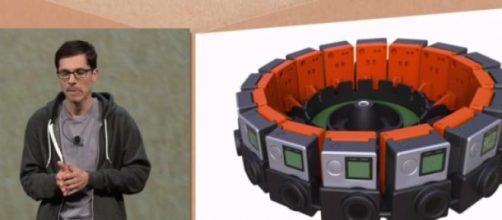Google believes in virtual reality and wants users to create content for it. First, it launched Cardboard, a device made of - yes - cardboard that users can mount on their smartphones and strap around their heads to get a virtual reality experience. Now, the company is going further with a new platform called "Jump."
It's an open platform comprised of a 16-camera rig and assembler software, that allows any user to come up with their own virtual reality recording system. The player? YouTube, of course. The site will support Jump videos in the summer.
"We wanted to put professional, previously impossible tools in the hand of creators everywhere," Google executive Clay Bavor said in the opening keynote of Google I/O, in San Francisco. "Jump enables any creator to capture the world in VR video," he added.
With off-the-shelf cameras mounted in the rig, users can capture 360º, spherical videos, that Jump's computer vision then treats and assembles. "Anyone will be able to build a Jump ready camera," Bavor explained, but Google wanted an established brand to be the first. That's why they called GoPro for help, and indeed, the action camera maker will be the first one to jump, promising to develop and sell it soon.
"The Jump announcement spells a few things," Gartner analyst Mark Hung explains Blasting News.
"That array of 16 cameras and the partnership with GoPro aims to solve the problem of the actual creation of VR material," he argues. "Frankly, I think that's been a big problem – there are usable apps but no content." Once people start creating it, YouTube support will be very important in access. Hung also draws a comparison to YouTube's early days – it was user generated content that propelled the video-sharing site to its position today.
"It's going to take more time, people need to make more content," he warns, albeit stressing that "in terms of how users generate that content, Jump is a step in the right direction."
It also comes before Facebook finally launches Oculus Rift, the virtual reality goggles that have been around in prototype format for a long time, and will hit the market in early 2016.
At this point, games have been its strongest use. But if users can actually create content, that opens up a lot of new possibilities. What's not so easy (or cheap)? Buying 16 good cameras off-the-shelf anytime soon.

